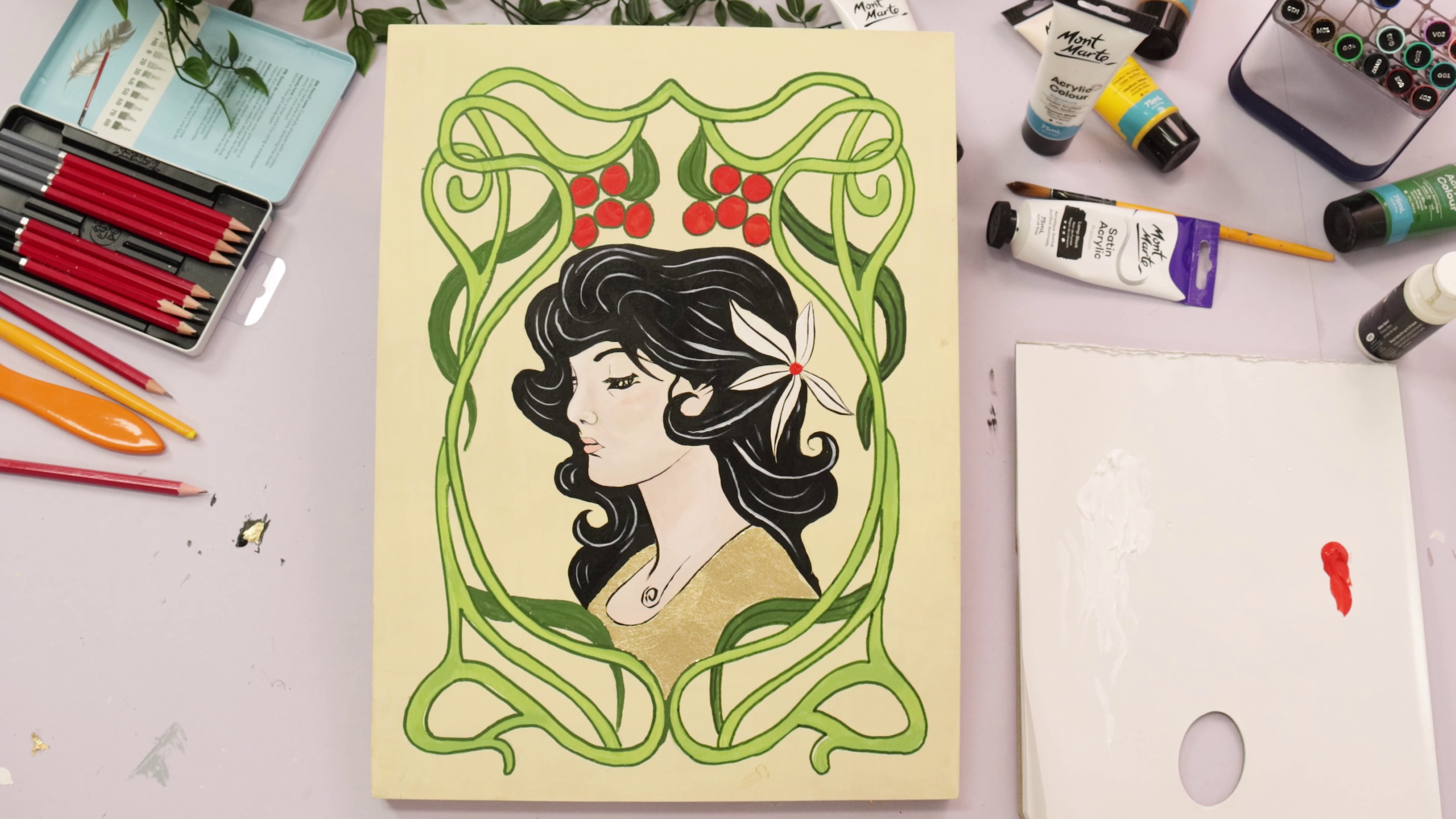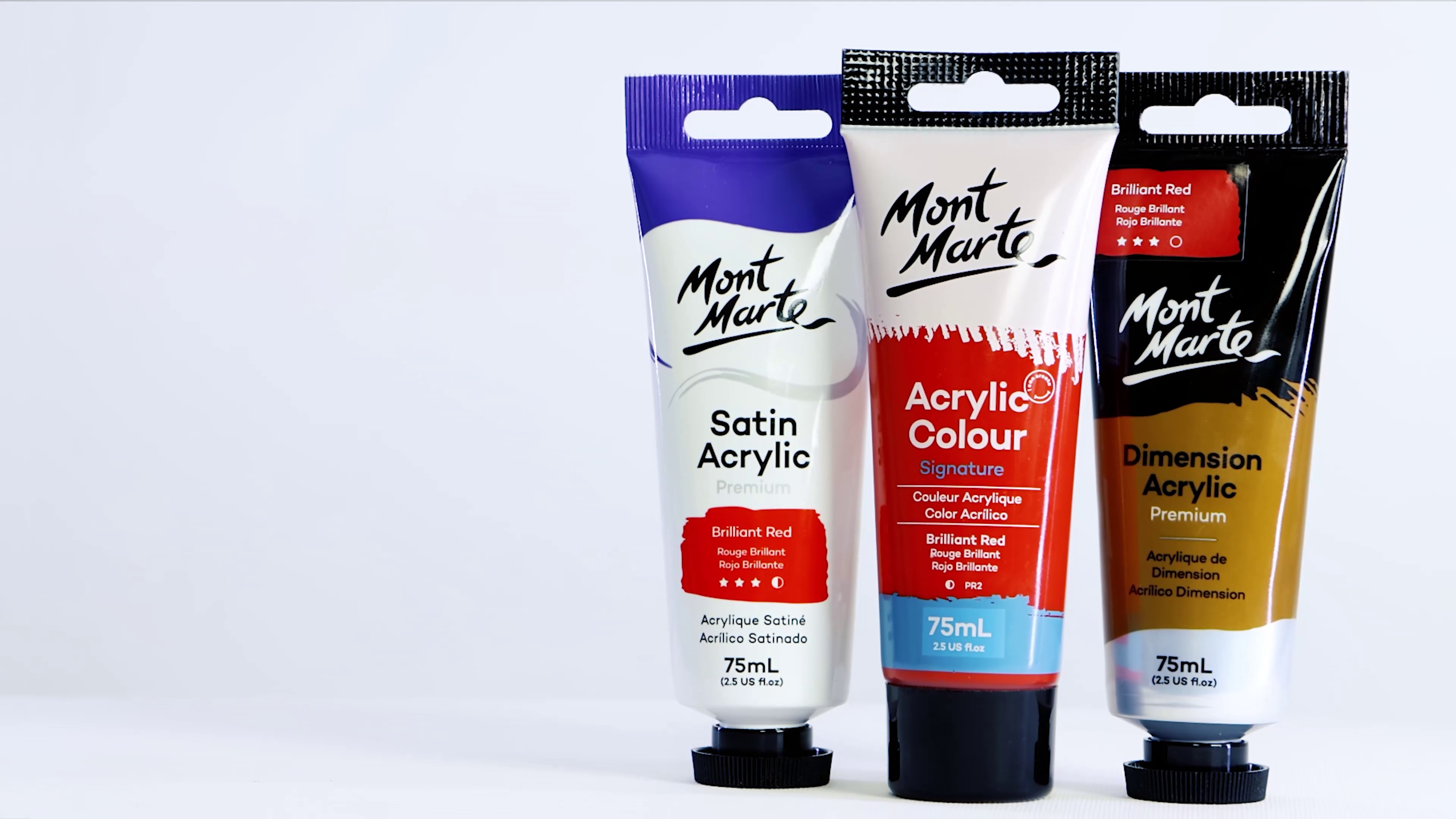Gouache is a unique medium that’s fun to create with. It’s kind of like watercolour crossed with acrylic paint, with loads of vibrant colours and flexible application. If you’re wondering how to say it (it’s a bit of a tricky one!), it’s pronounced ‘gwaash’, rhyming with marsh. We’ve got some beginner-friendly tips and tricks below so you can learn how to use gouache and paint with confidence.
About gouache paint
First things first, let’s talk gouache basics. Here are some handy facts about what makes the paint special!
- Dries matte
- Photographs well
- Mistakes can be covered
- Can be reactivated with water and a brush
- Versatile and forgiving as you can rework
- Can be thinned with water
- Opaque pigments
- Best suited for paper (ideally Watercolour Paper) for best binding
- Dries flat, without physical texture
- Best applied with Gouache Brushes or Watercolour Brushes
- Paints mix cleanly for colour palette freedom
Difference between gouache and watercolour
While watercolour and gouache are a little similar and often compared, there are some key differences between them. Gouache paints have a higher pigment content than watercolours, which is why they are opaque and full coverage. The pigment is also ground less finely, with a formula that makes it dry flat and matte.
You’ll notice when comparing the two that watercolours are more transparent, so you can create glaze effects and layer colours with dimension. Using gouache is great for flat, one-dimensional designs found in abstract, gestural, and stylised paintings. As gouache is opaque, you can cover and amend errors more easily; watercolour shows layers below when layering paints, so mistakes are harder to obscure.
Typically, watercolour requires some planning and foresight before applying as the colours are transparent. This means you have to know the order you want to apply them before you start. With gouache, you can make changes and map it out as you go, similar to using acrylics and oils.
As you don’t dilute gouache as much as watercolours, you’re likely to use gouache faster. This makes sense as the paint is applied more thickly and the colour opacity is solid.
Finally, gouache dries a little faster than watercolour and is less likely to change tone or dull after drying. Any changes you may notice are that lighter tones may dry a little darker, and darker tones might dry a bit brighter.
How to store gouache
Mont Marte Gouache comes in tubes so the paints stay fresh and don’t dry out (if you put the caps on firmly!). We advise storing them in a cool, dry place out of direct sunlight, so maybe in a drawer or cupboard. Regularly clean the threads on your tubes while the paint is wet, so the colour doesn’t dry there and prevent a proper seal.
To store an ongoing gouache palette, grab yourself an Airtight Palette. These are great for storing watercolour and gouache paints, keeping them fresh for longer between sessions.
If you don’t have an Airtight Palette but are desperate to get one more stroke out of a dried-out colour, you can reactivate it with water. Just load up a watercolour brush with water and work it into the dried gouache, watching at the paint reactivates. As you’re adding more water to the mix, the colour may not be as opaque as it once was but it’s always handy if you’re in a bind!
Gouache techniques
To help kickstart your gouache journey, here are three simple techniques to try! They’re beginner friendly and fun to experiment with, so give them a go at home.
1. Gradient wash
Making a gradient wash is handy for painting landscapes or adding backgrounds to your artwork. They’re great for making a fading sunset, or an ombre ocean. Simply load up your brush with gouache paint and start at the end of your page where you want the colour most concentrated. Start applying the paint, working your way across the page, and dipping your brush into a little more water as you progress. Each time you dilute the paint, blend it into the last stroke of the previous colour to smooth the transition.
2. Dabbing
You can lift colours from your painting before they dry to create highlights and lighten areas. Simply use a clean paper towel and absorb excess colour from the page, watching as the white paper beneath is exposed. This technique is great for painting clouds or adding movement to water.
3. Direct colour mixing
Try mixing colours on your paper, rather than a palette, for a more impressionistic look. If you’re making a purple, start by applying red to your paper before adding a little blue next to it. Use your brush to mix the colours on the page, creating a dimensional effect as the original colours are visible around the edges of the new colour. While they didn’t use gouache, artists such as Monet, Pissaro, and Degas used this technique in their paintings!
We’ve got a whole blog dedicated to different gouache techniques, so check it out for more suggestions!
Beginner gouache painting ideas
Start simple when experimenting with gouache. It’s a good idea to dedicate a page to trying out different line weights, seeing what happens when you mix the paint with water, and reactivating dried brushstrokes. When it comes to thinking of a simple easy gouache painting, we’ve got a few ideas below you can try out!
1. Simple florals
Try layering different hues of the same colour in the shape of a flower for a dimensional petal effect. You can vary opacity to bring some parts of the flower into light and cast others into shadow. Once you nail one flower, why not paint a floral pattern design, or have a go at a whole meadow?
2. Mountains
A mountain range is a great muse when using gouache. You can easily create dimension by diluting the paint at the top of the mountain, keeping the base rich and dark. Add grass or a river in the foreground and use the dabbing technique for the sky and snow!
3. Desert scene
Think mountains meet florals, but with a totally different colour palette! Use warm tones to layer sand dunes from the background to the foreground, with a white spot in the sky for the sun. Add some contrast and interest with a vibrant green cactus in the foreground. You can keep your colours flat and opaque for a more stylised look or vary the opacity to add more dimension. It’s totally up to you!
Sealing gouache
If you want to make your gouache paintings stay vibrant for longer, it’s a good idea to protect them once they’re complete. You can do this by simply using a spray varnish, or else framing behind glass! Both measures help seal the paint from the elements. It’s also best to store or display your artwork in a cool, dry place, out of direct sunlight.
Hopefully, we’ve made gouache painting easy and accessible so you’re ready to explore the medium. You can pick up Mont Marte Gouache in-store or online, with a few different set sizes to suit your style of creating.
Experiment and try easy gouache painting for beginners! Show us what you come up with by tagging us @montmarteart or using #montmarteart on Instagram or Facebook .
Looking for more ways to stay inspired? Browse our Tips & Techniques collection, or find a Project to explore.
To stay up-to-date with the latest projects, tips, tricks, and inspo, join our Creative Connection community by signing up down below.





























